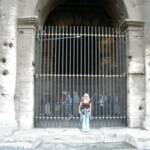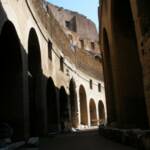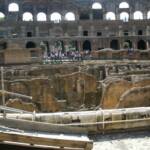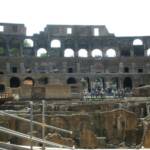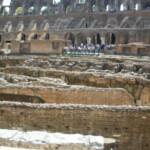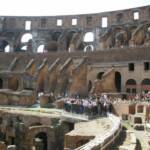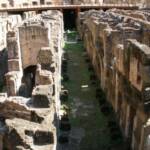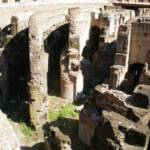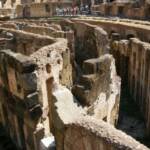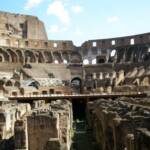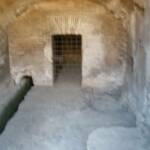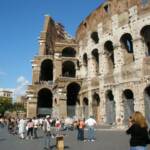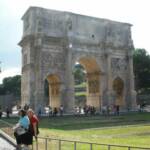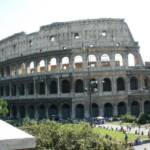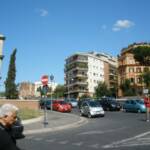








COLISEUM
Email: TBeckel1@comcast.net
Boca Raton, Florida
The Coliseum or Colosseum (real name is "Flavium Amphitheatre")
The Coliseum gave spectators efficient protection from the sun thanks to its ingenious roof covering, the "Velarium"
After the VI Century, with the Empire's decline, the Coliseum fell into disuse.
The nickname may have came from the enormous statue of Emperor Nero, a colossus 35 metres high, which stood right next to the amphitheatre
City buildings and streets surrounding the Coliseum
Each row of arches represented one floor and the height of the outside wall was 157 ft.
Passageways from the perimeter hallway that opened into a tier of seats from below
Its construction started between 70 and 72 AD under the emperor Vespasian and was completed in 80 AD under Titus
Interior hallways line the entire perimeter of the Coliseum
Capable of seating 50,000 spectators, the Coliseum was used for gladiatorial contests and public spectacles
Other public spectacles were held there such as mock sea battles, animal hunts, executions, re-enactments of famous battles, and dramas
It was later reused for such purposes as housing, workshops, quarters for a religious order, a fortress, a quarry, and a Christian shrine
It has been estimated that about 500,000 people and over a million wild animals died in the Coliseum games
The flooring no longer exists, these are the underground rooms where prisoners awaited execution
The building ceased to be used for entertainment in the early medieval era
A wooden floor covered by sand covered an elaborate underground structure called the "hypogeum" meaning underground
It consisted of a two-level subterranean network of tunnels and cages beneath the arena where gladiators and animals were held
The Coliseum is an iconic symbol of Imperial Rome and its breakthrough achievements in earthquake engineering
A den where lions were kept prior to the kill
Cobblestone walks surrounding the Coliseum
Elliptical shaped in the center of Rome, Italy, the Coliseum is the largest ever built in the Roman Empire with a base area of 6 acres
The Arch of Constantine dedicated in AD 315 to celebrate Constantine's victory three years before over his co-emperor, Maxentius
It took one hundred sailors from the Imperial fleet to move the roof to the beat of a drum
The outer wall has over 100,000 cubic meters of travertine stone set without mortar and held together by 300 tons of iron clamps
The Arch of Constantine is 68 ft. high, 84 ft wide and 24 ft deep
Please report any broken links to Webmaster
Allow a few minutes for all of the thumbnail photos to load. Then simply click on the first thumbnail and a large image box will appear which will allow you to view all the photos in that row on a larger scale.
Website designed by Tami Beckel for Seashells by the Seashore, LLC
